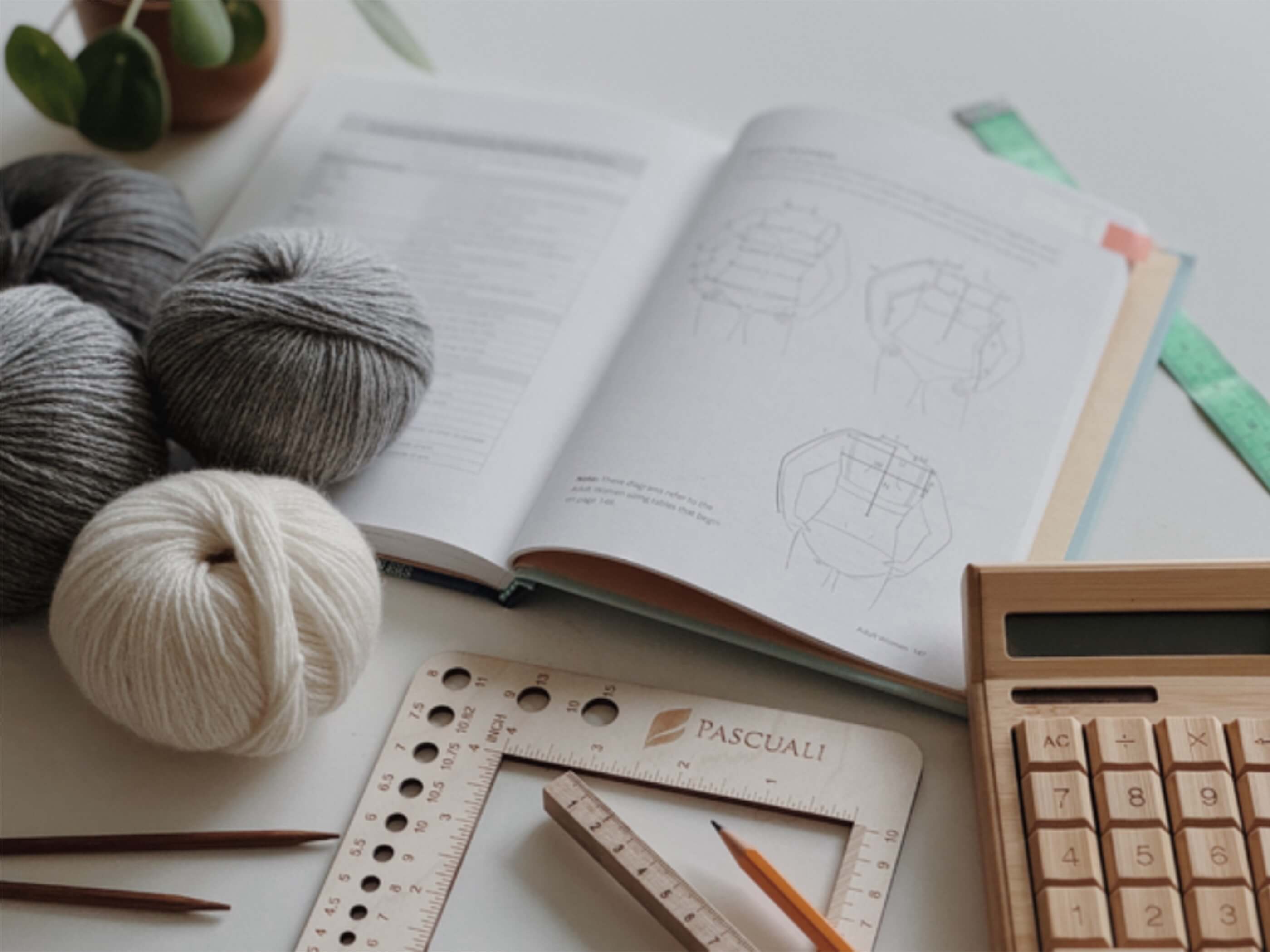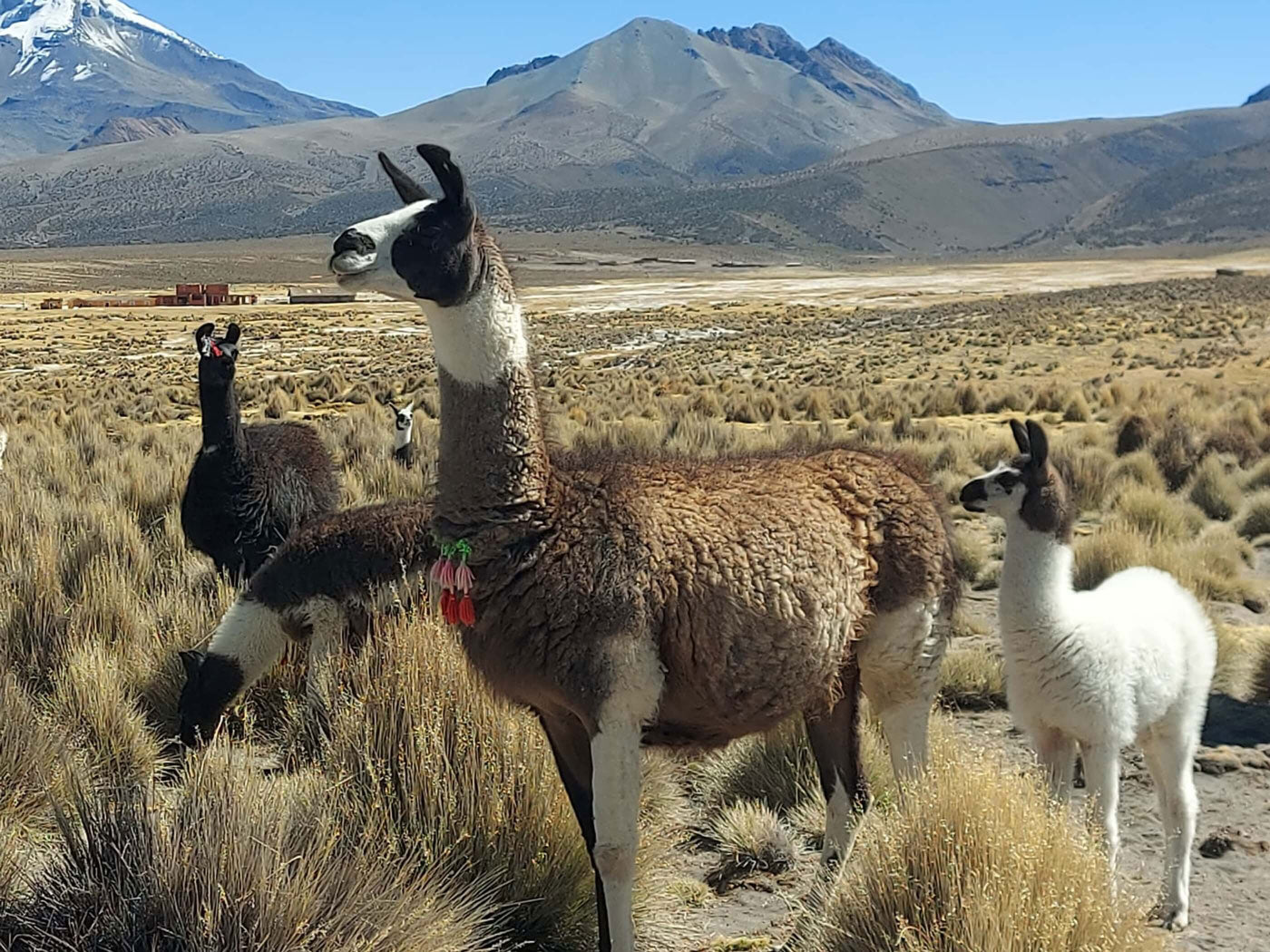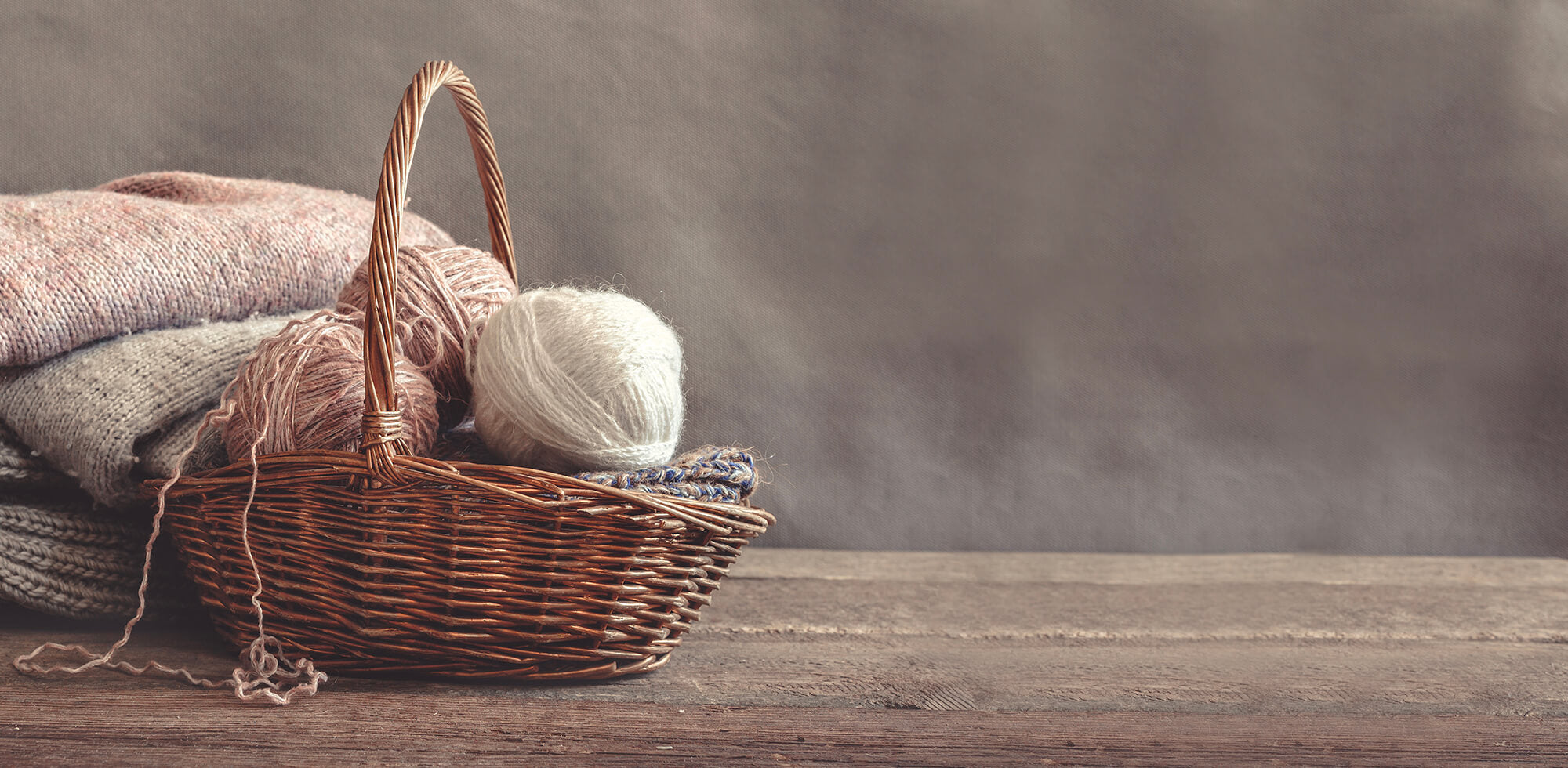By Claudia Ostrop
If you’re interested in wool and yarn — whether you enjoy knitting, crocheting, or weaving, or simply love browsing the offers in a yarn shop — you may have come across the terms “combed yarn” and “carded yarn.” Do you know what these terms mean? What is the difference between the two types of yarn, and why should it matter to you?
Today, we will take a closer look at combed and carded yarns. We’ll discuss the manufacturing process, the properties of both yarn types, and how you can use them in your knitting projects.
Don’t worry — it won’t be a dry excursion into textile technology. This will remain light and easy to understand, I promise!
The Production of Combed Yarns and Carded Yarns
Before we go into the differences, let’s take a look at the basic manufacturing processes. This is where the essence of what distinguishes combed yarn from carded yarn lies.
Carded Yarn – The "Wild" Yarn
The manufacturing process of carded yarn is relatively short and not as elaborate as that of combed yarn.

The cleaned raw wool is first carded. During carding, the wool is passed through rotating wire brushes to separate the individual fibers (after all, who wants felt clumps in their yarn?). Once the carding process is complete, the fibers are separated and generally lie in the same direction, although not perfectly aligned with one another. The fleece produced during carding contains a variety of fiber lengths, as well as plenty of air. This air remains during the spinning process, resulting in a loose, airy yarn.

Carded yarns have a rather irregular structure because the fibers are not perfectly aligned. As a result, the yarn is soft, voluminous, and often a bit "hairy." This slight "fuzziness" makes the yarn particularly warm and cozy.
You could compare a carded yarn to people at a standing party, where everyone is gathered together, but still a bit mixed up.
The Pascuali range also includes carded yarns:
These are Cashmere Lace, Cashmere 6/28, Cashmere Worsted (which will soon be leaving us), Puno and Puno Winikunka, Re-Jeans, Nepal and Camel DK.

Combed Yarn – The "Neat" Option

Combed yarn is produced through a considerably more complex process. The wool fibers are carefully combed after carding. In this process, all the shorter and disordered fibers are removed, leaving behind the long, parallel-aligned fibers that lie closely together with little air between them.
Because the fibers are so neatly aligned, this results in a smooth, firm, and even yarn. Combed yarns are generally finer and denser than carded yarns. They tend to be less "fuzzy" and often have a slight sheen.
To revisit the party image: imagine now that the group for the combed yarn is arranging itself for a group photo — everyone stands neatly side by side and looks in the same direction.
Properties of Combed Yarns vs Carded Yarns
Now that we know how combed and carded yarns are made, what properties result from the different processes applied to the wool fibers in the finished yarn?
Appearance and Structure

Carded yarns have a rustic appearance due to the uneven structure of the fibers. The surface is often a bit hairier, which gives the yarn a fluffy look. Knitted pieces made from carded yarn appear softer and more voluminous, making them perfect for cozy winter sweaters and scarves.
In contrast, combed yarns have a much smoother and more uniform surface. The fibers are neatly aligned, which can even give the yarn a slightly shiny appearance. Knitted pieces made from combed yarn often appear more elegant and "tidy." They feature a more defined structure, enabling patterns such as cables or lace work to stand out more clearly and precisely, although this ultimately depends on the specific design.(Image: Left - Combed yarn; Right - Carded yarn)
Softness and Wearing Comfort

Carded yarns tend to be soft and fluffy, making them feel cozy overall. The combination of loose spinning and a mix of short and long fibers contributes to this warmth. However, for those with particularly sensitive skin, carded yarn might feel a bit scratchy, especially if it’s made from rougher wool. The uncombed fibers can occasionally protrude and cause irritation.

Combed yarns, on the other hand, feel smoother and therefore somewhat "cooler." Because the fibers are denser and more even, combed yarn has a firmer structure and is usually less fluffy. Knitted pieces made with combed yarn are often very pleasant against the skin, especially when fine fibers like merino wool are used.
Thermal Insulation

When it comes to warmth, carded yarns are unbeatable. The irregular structure of the fibers creates small air pockets within the yarn, providing excellent insulation. This means that knitted items made from carded yarn keep you wonderfully warm—ideal for cold winter days.
While combed yarns also provide insulation, they tend to retain less heat than carded yarns due to their denser and firmer structure.
Sustainability
The ideal yarn would consist of fibers of exactly the same length, but this is not possible in nature. Long fibers are suitable for combing, while short fibers are considered waste and are recycled. To create cost-effective yarns, it's common to use these short fibers (essentially the waste) to produce carded yarns. While this might be cheaper initially, carded yarns often pill and fuzz significantly more than high-quality combed yarns. That’s why we are somewhat skeptical about the often-advertised recycled cashmere yarns—if the fibers used for carded yarns are particularly short, the durability of the knitted item made from them is usually compromised.
When Should You Use Each Yarn?
Now, the question arises: which yarn should you choose for your next project? The clear answer is: it depends…
The choice between combed yarn and carded yarn largely relies on what you want to knit or crochet and which properties are important to you in your finished piece.
For Cozy, Warm Projects: Carded Yarn

If you want to knit a thick, cozy sweater for cold winter days, carded yarn is your best bet. Its bulky, soft structure ensures that your knitted piece is not only warm but also incredibly comfortable. Carded yarn is also ideal for accessories like hats, scarves, or blankets, as it is easy to work with and has a pleasant feel. (Image: Pullover BATU)
Carded yarns can also work well for lighter knitted pieces or thinner tops: thanks to the air pockets, they provide excellent thermal regulation and keep warmth (from the outside) at bay.
For Fine, Elegant Knits and More: Combed Yarn

Conversely, if you are planning a finer knitted piece—perhaps a lightweight summer shawl, an elegant scarf, or a sweater for spring—then combed yarn is the better choice. Its smooth, even structure allows patterns to shine beautifully and gives your knitted piece an elegant look. (Image: Top ZAYA)
However, many combed yarns, due to their thickness, are not fine in the delicate sense, but rather luxurious: for example, our Maximo,
Tibetan, Sayama and Cashmere Charis, are wonderfully thick and cozy!
Just like carded yarns, they can be knitted into wonderfully thick, warm garments and accessories.
Ultimately, it comes down to personal preference in terms of which yarn speaks to you more. Carded yarns tend to pill more than combed yarns, meaning they are more prone to that annoying fuzziness because the individual fibers are loosely connected. When knitting with carded yarns loosely and exposing the pieces to friction, you may often find yourself reaching for a lint remover or a shaver. However, if a carded yarn is knitted tightly, the fibers hold together well, resulting in a durable piece.
If you’re ever unsure whether you’re working with combed or carded yarn, just conduct a rip test! The thread of carded yarn can be easily torn with your hands, while combed yarn is significantly tougher to rip apart, often requiring scissors.

A Matter of Price
Another key factor when deciding between combed and carded yarn can be the price. Since the manufacturing process for combed yarn is more involved (combing and sorting out short fibers requires additional steps), combed yarn is typically more expensive than carded yarn.
However, it's important to note that the quality of combed yarn is simply higher, and quality comes with a price.
Regular cotton fibers are usually shorter, so they are not combed during production because doing so would produce a significant amount of waste. As a result, basic cotton is rather inespensive. In contrast, Pima cotton, which is used in our Cumbria and Sole yarns, features much longer fibers that are suitable for combing, leading to the production of higher-quality yarns.
So, if you're planning a project with a limited budget, carded yarns might be the way to go, as they are often a bit less expensive. Of course, the price also depends on the fibers used—luxurious cashmere will naturally not be a bargain even if it’s a carded yarn. Generally, cashmere is most often offered as carded yarn because the fibers are typically very fine and short. Therefore, it usually isn’t combed—and customers associate cashmere with a fluffier yarn that they wouldn’t find in a combed yarn variant.
Let’s consider a popular blend available in various price ranges as an example: merino wool and silk. Our Saffira features high-quality mulberry silk, presented as a monofilament (a single long thread) that is tailored to the length of the merino wool. This allows for the production of a combed yarn that is nearly free from pilling and fuzzing while maintaining its beautiful luster over time

Conclusion: Combed Yarn or Carded Yarn?
Whether you choose combed yarn or carded yarn depends entirely on your project, your personal preferences, and the desired outcome.
At Pascuali, we produce combed yarns whenever possible, as they are qualitatively superior to carded yarns. However, there are exceptions to this rule:
Puno and Puno Winikunka are produced as carded yarns because alpaca fibers are about 4 inches (10 cm) long, whereas cotton fibers are only 1.4 inches (3.5 cm) long. Additionally, our Cashmere and Camel DK, yarns are made as carded yarns due to their short fiber length of about 1.4 inches (3.5 cm), which does not lend itself well to combing while meeting customer expectations for a fluffy product. Re-Jeans is made from recycled materials that typically consist of fibers too short for combing, and our Nepal yarn combines uncombed cotton with already combed linen in one yarn
At the end of the day, the best approach is simply to try both types of yarn and see which one you prefer! No matter which you choose, one thing is for sure: knitting is always fun—finding the perfect yarn is part of the creative process!




